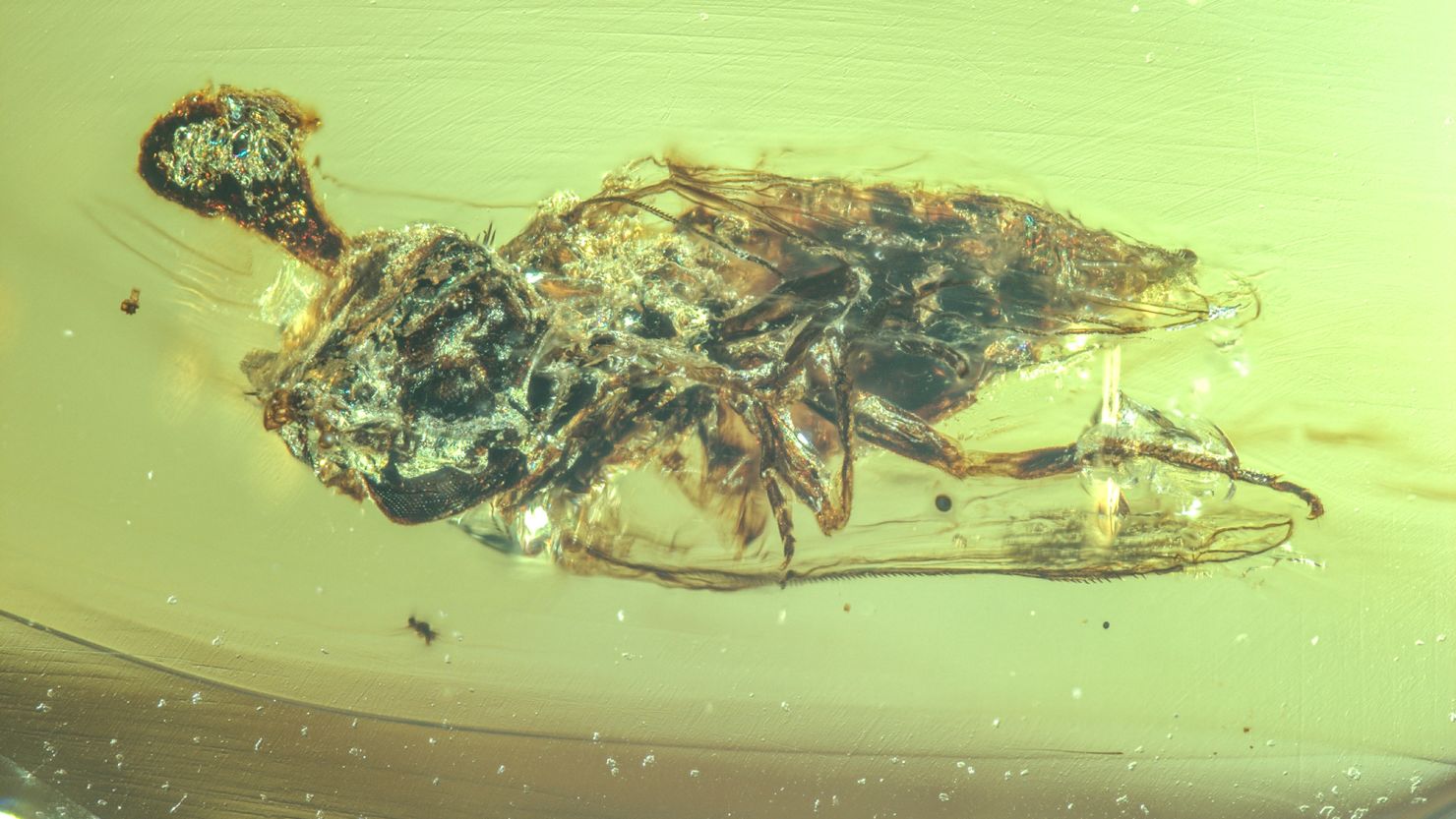Deep in cretaceous forests, around 99 million years ago, a chilling scene was captured—frozen in time by tree resin and ultimately revealed through amber. Two insects, an ant pupa and a fly, fell victim to parasitic fungi with blood-curdling precision. Recent research has uncovered the oldest known fossil evidence of “zombie” fungi—those infamous mind-controlling parasites still at work today.
🔬 Discovery and Context
During an excavation of mid-Cretaceous amber from northern Myanmar, scientists stumbled upon two astonishing specimens. One amber piece contained the carcass of an ant pupa, its body pierced by slender fungal stalks. The other preserved a fly, its head grotesquely sprouting a single, phallic fungus stalk.
These insects were infected by two new species, named to reflect their ancient lineage:
| Fungus | Host | Description |
|---|---|---|
| Paleoophiocordyceps gerontoformicae | Ant pupa | A network of microscopic spore-bearing stalks erupt through the insect’s integument |
| Paleoophiocordyceps ironomyiae | Fly | A singular, prominent fungal stroma bursts boldly from the fly’s head |
These striking images are now part of the Natural History Museum’s collection in London.
🕰️ Evolutionary Timeline
Fossils suggest that the Ophiocordyceps lineage—famous for zombifying modern carpenter ants—has been manipulating insect hosts for over 130 million years. This ancient connection to ants and flies implies early host-switching behaviors and complex parasitic strategies that have persisted through time.
🧠 The Zombie Mechanism
Today’s Ophiocordyceps fungi manipulate host behavior by invading the insect’s nervous system. Ants are compelled to climb, latch onto foliage in the iconic “death grip,” and await the fungus’s explosive emergence for spore dispersal. Laboratory images of modern infections bear a chilling resemblance to these amber-trapped scenes, suggesting behavioral manipulation strategies were already in play during the Cretaceous.
🔬 Technical Reveal
Cutting-edge techniques—like micro-CT scanning and high-resolution microscopy—made these minute fungal structures visible. Researchers documented spherical spore capsules (perithecia) perched atop delicate stalks, confirming their functional similarity to modern Ophiocordyceps fruiting bodies.
🌎 Ecological Significance
These parasitic fungi were likely ancient ecosystem regulators. By controlling insect populations, they played roles in maintaining balance—just as modern entomopathogens do. Their existence alongside dinosaurs in Cretaceous jungles highlights a deep-rooted ecological interplay with far-reaching consequences for insect diversity and behavior.
🔮 Future Prospects
With amber continually offering exceptional preservation, scientists anticipate more revelations. Each new fossil could refine our understanding of how ancient parasites co-evolved with hosts, shedding light on both prehistoric biodiversity and the evolution of parasitism.
🧩 In Summary
The 99-million-year-old fungal invaders offer a spectacular, almost cinematic glimpse into the ancient relationship between fungus and insect. Amber’s tiny time capsules have unveiled an early chapter of parasitic evolution—one that blurs the line between biology and horror, nature and myth. These fossils remind us: 100 million years ago, even in the age of dinosaurs, horror stories were unfolding on an insect scale, with zombie fungi pulling the strings.

















Leave a Reply